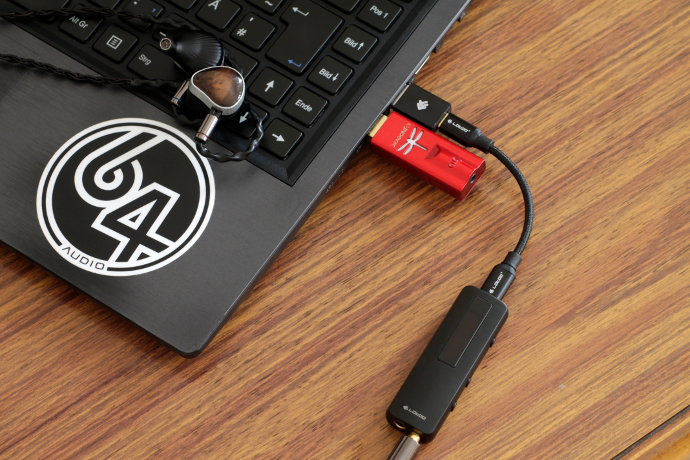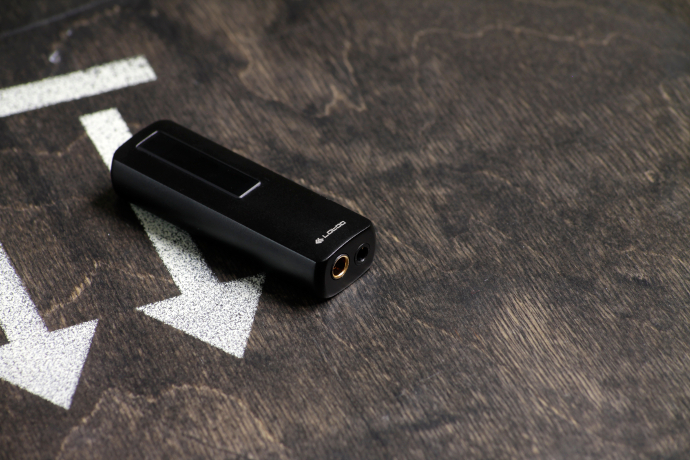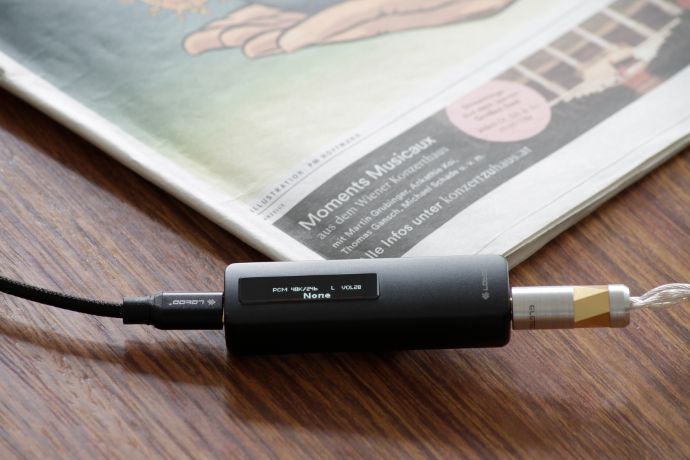Comparisons:
[responsivevoice_button]
In this section we will check out how the PAW S1 compares to one of the best selling DAC/Amps – the DragonFly Red. Unfortunately I don’t have the DragonFly Cobalt here, which would be a more up-to-date comparison. I’ve used my Laptop as source creating a shared zone in Roon, which lets me quickly hop back and forth between the Lotoo and AudioQuest.
I can only compare the PAW S1 to products that I have direct access to, and I won’t ever give comparisons based on short term listening experiences. Dealer visits and show sessions are not credible in my opinion and therefore I won’t give those. Other people are fine with that, but I am not.
If you want the PAW S1 compared to something else, let me know in the comment section.
Mentioned prices are in US Dollars and correct at the time of writing. Prices can of course change over time. Don’t blame me for that. 😉

Lotoo PAW S1
AudioQuest – DragonFly Red (199$)
The DragonFly uses an ESS9016 DAC chip to decode PCM up to 24/96. It also brings MQA support for those that care about it. I really don’t. The PAW S1 is a more sophisticated device that has its own headphone amp chip and support of higher resolution formats. On top of that, it also brings EQ/ATE settings to the table as well as an extra balanced output. Of course the DragonFly has been on the market since 2016, when the balanced output wasn’t as big of a must-have as it is today.
The DragonFly Red also uses a dedicated headphone amp chip, namely the ESS9601. Unlike the Lotoo you can’t control the volume directly on the unit though. With an output Voltage of 2.1 V (~69mW @ 32 Ohms load) the DragonFly comes very close to the output power of the PAW S1’s 3.5mm output (70mW).
In a sound perspective these two devices do sound rather different. The DragonFly sounds darker and not as highly resolving as the Lotoo. The Red gives an even fuller and thicker presentation, while the PAW S1 is cleaner and clearer. The S1 has a more open and neutral sound compared to the narrower DragonFly Red.
The PAW S1 creates a more open sound, that reaches further into width and depth than the DragonFly’s. Mids sound more transparent and cleaner. Instruments have a more precise rendering and presentation. Vocals have more air in them and the scene overall just appears more organized on the Lotoo.
Treble has wider extension on the PAW S1 than on the Red. The DragonFly can also come across as a bit muted at times, when it struggles to bring out the same volume in the highs as the Lotoo. Overall the DragonFly sounds more compressed and with lesser dynamic range. On top of that, I can also pick up noise floor on the Red with my sensitive monitors. Which I can’t say about the Lotoo.
The DragonFly Red was a great product at the time it was released, and even years after that it has held on to a strong fan base. But in my opinion, the Lotoo is a superior product on all fronts. Sound, features and build quality.
When I told Lieven how the S1 compares to the DragonFly Red, he mentioned that this would also be how the Cobalt sounds in comparison to the Red. Still, I can’t verify that with first hand experience, so take that with a grain of salt.

Lotoo PAW S1
Conclusion:
When I first saw photos of the PAW S1 appear online, I was very intrigued. Even though I am a die-hard DAP user, the idea of a simple DAC/Amp dongle with Lotoo’s sound had me going.
Overall the PAW S1 comes with Lotoo’s neutral but natural house-sound. It adds some body to instruments and musicians, but also comes equipped with high skills in technical abilities. As a simple DAC/Amp dongle solution I think it absolutely wins. People who don’t see the benefit of a Digital Audio Player but still want a higher quality experience should certainly take the Lotoo PAW S1 on their shortlist. On top of the great sound you also get superb EQ/ATE pre-settings that fit your current situation and two gain settings should you need it to go to eleven. Just remember, that the quality of your music files really matter with the PAW S1. Say no to resampling.
For me personally, the PAW S1 is an excellent alternative to my DAPs. Although it still won’t replace my PAW 6000 when I’m out and about. But as a fall-back solution, I keep the S1 with me on all my trips.
For less than 200 USD this is a fantastic device and it gets a very strong recommendation from me. Up on the list of best DAC/Amps you go!










Jack
How is the sound quality if compared to cheaper budget dongle priced under $100 like sonata HD pro or ibasso dc02/dc01?
Linus
Hi Jack,
thanks for your comment.
Unfortunately I don’t have any first hand experience with those. Sorry.
Cheers!
Vince
Thanks for the detailed view. It sounds a nice little device. Is it quiet enough to drive sensitive IEM like CA Solaris?
Linus
Hi Vince,
thanks for stopping by and leaving a comment.
The PAW S1 should not have any difficulties with the CA Solaris. Although I don’t have it, the S1 has no background noise with my hyper sensitive IEMs (Zeus XIV, Wraith). So I think you are in the clear. 🙂
Cheers!
VINCE
Thank you for the feedback. If the S1 can work with Zeus, I am sure this product can work with CA Solaris.
Jo
How does it compare with BTR5? They are similarly priced.
Can it match some desktop gear like a topping stack or a Zen Dac?
Robin
I have both. S1’s noise floor is low even for Solaris, which is great. However, volume 1 is even a little bit loud for me in a quiet room. It’s probably not a problem during commute. I just generally don’t pair Andromeda or Solaris with S1, cause I usually listen at home.
VINCE
Thanks Robin for your feedback. What DAP do you use with the Solaris? I am thinking about updating my AK 70 mark II.
Michael
Thanks a lot for reviewing. Would it be possible for you to make a comparison with iFi Hip DAC?
Eu Kit Kuan
Wow! Lotoo had always been the epitome of audio even it comes to DAP and I am sure this would be an epic device!
Si Grant
Balanced and single ended out’s, 2 gain settings and EQ from such a small footprint, now that is impressive ????
Aditya Sapre
Always wanted to try Lotoo products.. This seems like perfect product to start with.
Richard Whiddon
Did you try this S1 with your Dekoni Blue headphones? Can it drive these higher impedance phones to reasonable volume?
Thanks,
Richard
Martin
Dragonfly red – 2.1 V per channel for a power of approximately 2×135 mW into 32 Ohms no 69mW into 32 Ohms.
Tej
Hi there. I would be using this with a Oneplus 6 running Neutron. Does the S1 downsample e.g. from DSD256 to 128 or will it only play a track that is natively encoded as DSD128?
Matúš
A comparison between nextdrive spectra and Spectra X would be nice. And maybe that mentioned Cobalt as well :), Thanks.